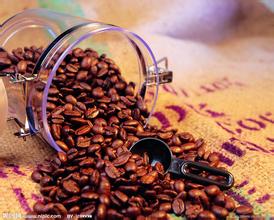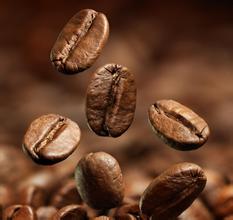Introduction to the Flavor description treatment method of Brazilian Coffee varieties
Brazilian coffee refers to coffee produced in Brazil. Brazilian coffee comes in many varieties, and like other Arabica coffees, Brazilian coffee is known as
Brazilian coffee
Brazilian coffee
"Brazils" is distinguished from "Milds" coffee. The vast majority of Brazilian coffee is unwashed and sun-dried, and is classified according to the state of origin and port of shipment. Brazil has 21 states, 17 states produce coffee, but four of them produce the most, accounting for 98% of Brazil's total production: Parana, Sao Paulo, Minas Gerais and EspiritoSanto. Parana in the south produces the most, accounting for 50% of the total.
Low-acidity, medium-roast coffee beans from the coffee center of the world.
Brazil has been figuratively compared to the coffee world's "giants" and "kings." There are about 3.97 billion coffee trees, and small farmers now grow 75 percent of Brazil's coffee. Brazil has twice or even three times as many coffee producers as Colombia, which is the world's second-largest coffee producer.
Unlike in the past, Brazil's economy is now less dependent on coffee, which accounts for only 8 - 10% of GDP. Before World War II, Brazil accounted for 50% or more of the world's coffee production, and now it is close to 30%, but the country's influence on coffee worldwide, especially on coffee prices, is significant. For example, two frosts in 1994 caused a sharp rise in global coffee prices. Although coffee is diverse, Brazilian coffee is suitable for the taste of the masses. For example: coffee produced in northern coastal areas has a typical iodine taste, reminiscent of the sea after drinking. This coffee is exported to North America, the Middle East and Eastern Europe. Another coffee that is interesting and worth pursuing is rinsed Bahia coffee. This coffee is not easy to find, because Brazil is the world's largest coffee consumer after the United States, and many of the best coffees can only be found in its domestic market.
In Brazil, the largest crop is Robett coffee. This coffee is sold in supermarkets. Brazilian Roscoff coffee, sold under the name Conillon, accounts for 15 percent of total production.
Old bourbon coffee is grown on estates in Cerrado district, Minas Greais state, in southeastern Brazil. Old bourbon coffee grown on these estates, such as Capin Branco and Vista Allegre, is also sold in the market. Although they come from the same region, these coffees have their own characteristics. Capin Blanco is softer than Vista Allegra, which is strong and dark and has lower acidity. However, like all Brazilian coffees, they are best served fresh because the older they are, the stronger the acidity. These coffee growers have organized themselves into the Speciality Coffee Association of Brazil.

Important Notice :
前街咖啡 FrontStreet Coffee has moved to new addredd:
FrontStreet Coffee Address: 315,Donghua East Road,GuangZhou
Tel:020 38364473
- Prev

Introduction to the price of the manor producing area by the characteristic treatment of Nicaraguan coffee grinding degree
Cubita adheres to the principle of perfect coffee, only makes individual coffee, the picking of coffee beans is done by hand, and all the particles of coffee beans are strictly selected according to the standard of sieve 17-19, plus washing coffee beans, to a large extent, remove defective beans and other impurities to ensure the quality of coffee. It has a high reputation in the coffee industry. Careful people will find that Cubita has a relationship with other people
- Next

Refreshing taste description of Kenyan Coffee Flavor characteristics of Grinding degree introduction of taste varieties
If you only know how to brew, but not how to taste coffee, the original delicacy may become tasteless. Some people taste coffee with the taste of the tongue, while others enjoy the aromatic mellow in the mouth. in addition, it depends on the condition of the body and the atmosphere around the coffee. In a word, tasting coffee is a very delicate thing. To
Related
- Detailed explanation of Jadeite planting Land in Panamanian Jadeite Manor introduction to the grading system of Jadeite competitive bidding, Red bid, Green bid and Rose Summer
- Story of Coffee planting in Brenka region of Costa Rica Stonehenge Manor anaerobic heavy honey treatment of flavor mouth
- What's on the barrel of Blue Mountain Coffee beans?
- Can American coffee also pull flowers? How to use hot American style to pull out a good-looking pattern?
- Can you make a cold extract with coffee beans? What is the right proportion for cold-extracted coffee formula?
- Indonesian PWN Gold Mandrine Coffee Origin Features Flavor How to Chong? Mandolin coffee is American.
- A brief introduction to the flavor characteristics of Brazilian yellow bourbon coffee beans
- What is the effect of different water quality on the flavor of cold-extracted coffee? What kind of water is best for brewing coffee?
- Why do you think of Rose Summer whenever you mention Panamanian coffee?
- Introduction to the characteristics of authentic blue mountain coffee bean producing areas? What is the CIB Coffee Authority in Jamaica?

